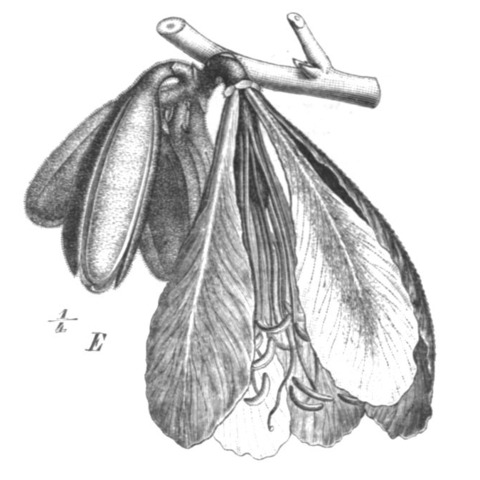Flowers sometimes (not in the Flora area) very large (up to 25 cm long), in terminal or axillary racemes, the axes usually brown-tomentellous with flowers arranged distichously; bracts caducous, often leaving a prominent scar; bracteoles not enclosing flower bud, caducous.
Leaves paripinnate or with alternate leaflets (not in our area); leaflets with well-developed petiolules, with a marginal nerve, usually with one or two marked swellings (?domatia) on the margin near the base.
Stamens 10, one of them free and the other nine united towards the base into a short sheath, glabrous or villous below; anthers dorsifixed, dehiscing longitudinally.
Petals 5, four of them equal, the fifth narrower and differently coloured, obovate-spathulate, crinkled at the margins, imbricate, villous along and near the midrib.
Sepals 4, very narrowly imbricate, brown-tomentellous outside and velutinous-subsericeous inside, inserted on the rim of an infilled ± campanulate hypanthium.
Fruit woody, compressed, dehiscing into two valves, oblong-oblanceolate to suborbicular.
Ovary shortly stipitate, tomentose; ovules 1–many; style glabrous; stigma ± peltate.
Seeds large, compressed, without an areole.
Trees, evergreen or deciduous.
